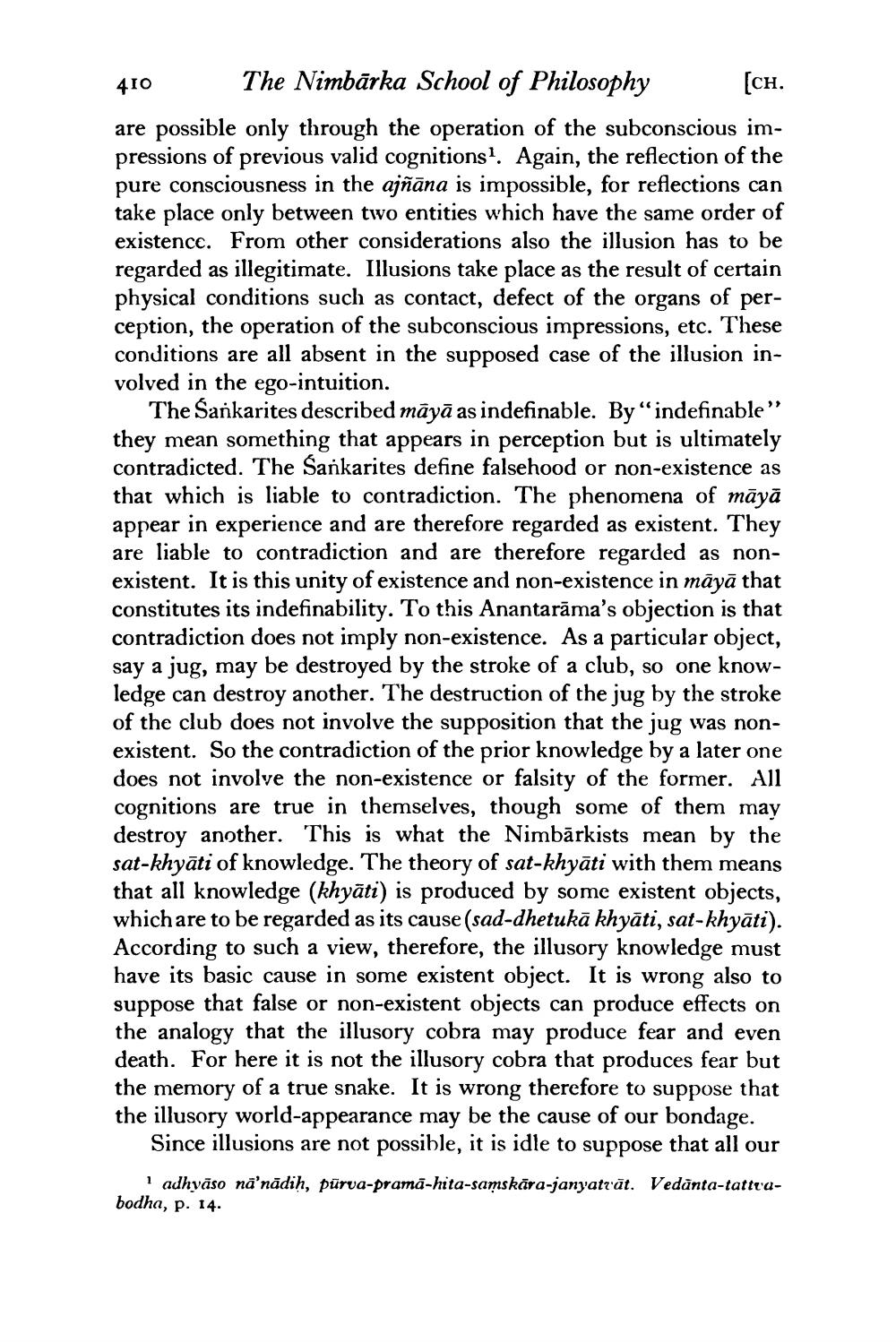________________
410 The Nimbārka School of Philosophy [ch. are possible only through the operation of the subconscious impressions of previous valid cognitions?. Again, the reflection of the pure consciousness in the ajñāna is impossible, for reflections can take place only between two entities which have the same order of existence. From other considerations also the illusion has to be regarded as illegitimate. Illusions take place as the result of certain physical conditions such as contact, defect of the organs of perception, the operation of the subconscious impressions, etc. These conditions are all absent in the supposed case of the illusion involved in the ego-intuition.
The Sankarites described māyā as indefinable. By“indefinable" they mean something that appears in perception but is ultimately contradicted. The Sankarites define falsehood or non-existence as that which is liable to contradiction. The phenomena of māyā appear in experience and are therefore regarded as existent. They are liable to contradiction and are therefore regarded as nonexistent. It is this unity of existence and non-existence in māyā that constitutes its indefinability. To this Anantarāma's objection is that contradiction does not imply non-existence. As a particular object, say a jug, may be destroyed by the stroke of a club, so one knowledge can destroy another. The destruction of the jug by the stroke of the club does not involve the supposition that the jug was nonexistent. So the contradiction of the prior knowledge by a later one does not involve the non-existence or falsity of the former. All cognitions are true in themselves, though some of them may destroy another. This is what the Nimbārkists mean by the sat-khyāti of knowledge. The theory of sat-khyāti with them means that all knowledge (khyāti) is produced by some existent objects, which are to be regarded as its cause (sad-dhetukā khyāti, sat-khyāti). According to such a view, therefore, the illusory knowledge must have its basic cause in some existent object. It is wrong also to suppose that false or non-existent objects can produce effects on the analogy that the illusory cobra may produce fear and even death. For here it is not the illusory cobra that produces fear but the memory of a true snake. It is wrong therefore to suppose that the illusory world-appearance may be the cause of our bondage.
Since illusions are not possible, it is idle to suppose that all our
adhyāso nā'nādih, pürva-prama-hita-samskāra-janyatrāt. Vedānta-tattrabodha, p. 14.




